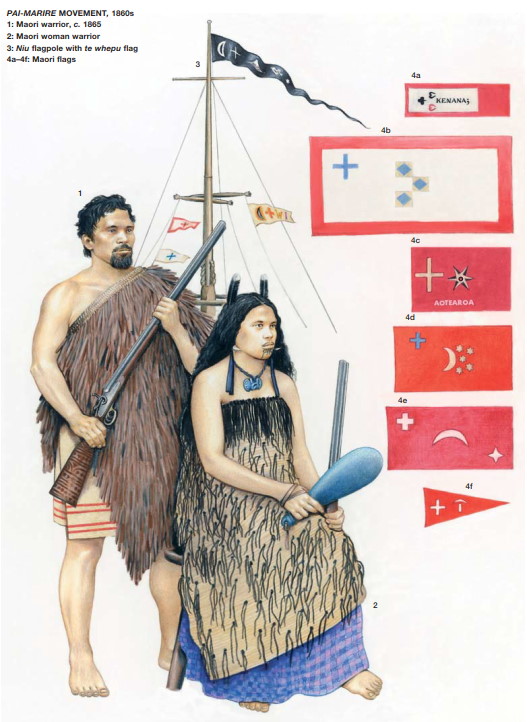
MANGAPIKO STREAM, WAIKATO, NEW ZEALAND, 1864
After the United Kingdom had signed the Treaty of Waitangi with chiefs of the indigenous Maori people in 1840, the British regarded the whole of New Zealand as a colony within their empire. Many Maori saw the situation differently. Disagreements over the treaty’s implications for their rights to land sparked a sequence of conflicts now known collectively as the New Zealand Wars, which took place intermittently between 1845 and 1872. Not all Maori actively resisted colonisation; some even joined the ‘British’ side to fight alongside local militiamen and members of the regular army. Those Maori who opposed colonial expansion – considered ‘rebels’ by the British – were skilled combatants and creative strategists, but were eventually overcome by the weight of superior numbers and firepower.
This map depicts an incident that took place on 11 February 1864, during the Waikato War. Maori forces launched a surprise attack on some British troops who were bathing at a ford in the Mangapiko Stream (shown at lower right). The Maori position is marked with dark blue dots in the scrub inside the curve of the stream. Reinforcements were called in – the great Maori fortress of Paterangi (at top left) and a British camp (at left) were both nearby – and soon several hundred men were fighting on each side. Six British soldiers and about 28 Maori were killed.
Although this was not a major battle, it was brought to wider notice because of the actions of Charles Heaphy, a major in the Auckland Militia. He rescued an injured soldier under intense fire – so heavy that ‘Five balls pierced his clothes and cap’ – and continued to help wounded men, despite being badly hurt himself. As a result of his actions, Heaphy was awarded the Victoria Cross, the highest gallantry medal for members of the British armed services. He was both the first colonial soldier and the first non-regular soldier to earn this honour. This and another map, both drawn by Heaphy himself, were included in a dossier of evidence submitted to the War Office in support of his claim to the medal.
Heaphy’s father, Thomas, was a talented painter who had served the Duke of Wellington as an artist during the Peninsular War. Charles also trained as an artist himself, at the Royal Academy in London. In 1839, aged about nineteen, he became a draughtsman working for the New Zealand Company, which set out to colonise those islands. For much of his career, he worked for the colonial government in various roles connected to land administration, including the surveying of lands taken from Maori after the wars. He also served for a time as a member of the New Zealand House of Representatives and as a judge in the Native Lands Court. Heaphy’s official career, however, was undistinguished compared to his artistic achievements, and he is best remembered for his fine topographical views. This beautifully drawn map reflects his skill as a draughtsman no less than his bravery as a soldier.